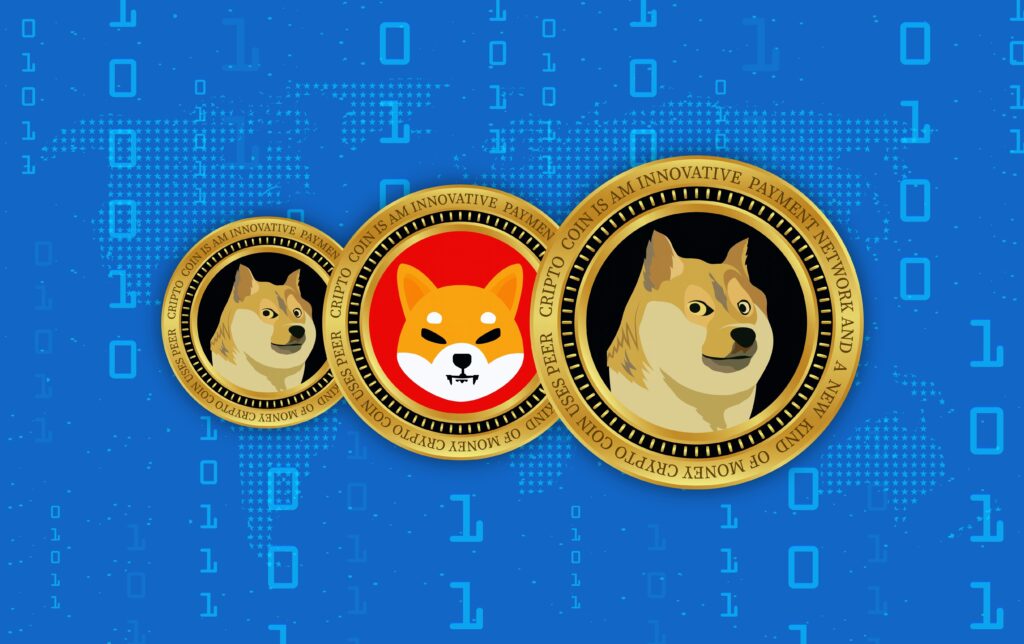Meme Coins Explained: From Memes to Millions
Meme coins are crypto tokens inspired by internet memes or trends, often lacking utility and value beyond their cultural appeal. But there is more to it.
First introduced in 2013, Dogecoin was the first meme coin created as a joke to troll Bitcoin and its rising popularity at the time. But little did the creators of Dogecoin know that a mere decade later, over 300 of these coins will swarm the market, with some of them boasting market caps rivaling those of popular altcoins.
But what are they all about? Why are they so popular? Why do people buy them? In this article, we’ll discuss meme coins as a cultural phenomenon, the driving factors behind their popularity, and how to make the most out of this opportunity.
What are Meme Coins?

Memes, those bite-sized snippets of humor and cultural commentary, have taken the internet by storm. They capture our attention, spark conversations, and sometimes even become a part of our shared vocabulary.
Meme coins take this cultural phenomenon and infuse it with cryptocurrencies. At first glance, they might seem like a big joke, and in many ways, they are. But there is more to it than meets the eye.
Meme coins are often characterized by their limited utility and volatility, with prices that can skyrocket one day and plummet the next. While some do offer niche functionalities – like tipping on social media or operating as governance tokens – the primary draw isn’t their utility but the sheer entertainment value and speculative opportunities they bring to the crypto space.
But then, what is the driving factor behind their popularity?
It’s the community. Meme coins, like Dogecoin or Shiba Inu coin, often have incredibly strong communities. After all, the concept of these coins is a meme in itself, and people love to share memes, don’t they? Moreover, many of these communities have become a shared space for charitable initiatives.
Future of Meme Coins
As the crypto landscape continues to evolve, some meme coins are trying to shed their “meme-only” status and prove that they can be more than just a fleeting trend.
For instance, the recently launched Tamadoge (TAMA) is building a Tamaverse, a space where players can virtually interact with each other. It also includes characters known as Tamadoge pets and multiple play-to-earn arcade games, like Super Doge, Rocket Doge, To The Moon, and Tama Blast.
Then there is Monacoin (MONA), an open-source P2P payment network that facilitates faster transactions than Bitcoin.
Nevertheless, while some coins aim to establish real-world utility by supporting specific use cases, enabling transactions, or contributing to broader blockchain innovation, others might fade into oblivion as the market matures and sentiment shifts.
Why Do People Buy Meme Coins?
The draw of meme coins lies in their unique ability to tap into the human desire for excitement and quick gains. The sheer fun and excitement of participating in a meme-driven movement can be contagious. People love being part of something that seems like a joke and a potential jackpot rolled into one.
This “meme factor” amplifies the hype surrounding these coins. When community members talk about the next “moonshot” or the next big meme-driven surge, it can quickly create a sense of FOMO (Fear Of Missing Out) among those on the outside.
Moreover, the idea of making fast profits is a strong motivator. The rapid price fluctuations these coins experience can lead to significant gains. It can also lead to equally substantial losses, which is very common and documented in the meme coin space. But the excitement and potential for quick gains can sometimes overshadow the importance of thorough research and due diligence.
Are Meme Coins a Good Investment?

For the average investor, meme coins are not a good investment.
Here is why:
Unlike established altcoins such as Ethereum and Litecoin, which find utility in supporting decentralized applications (dApps) through smart contracts, meme coins typically lack substantial real-world use cases. This limitation translates to a lack of widespread adoption, making them more suitable for speculative investing rather than long-term strategic investment.
However, this volatility can create exciting opportunities for short-term traders seeking quick gains. But they also come with significant risks.
For instance, let’s consider April 2021, when the price of Dogecoin experienced a substantial upswing. It surged from $0.009 to $0.6, driven by a series of tweets by Elon Musk (and other celebrity influencers like Snoop Dogg).
This surge prompted many individuals to buy the coin, adding to the fear of missing out (FOMO) and consequently driving the prices even higher. Nonetheless, this upward momentum was short-lived, as by July, Dogecoin’s value plummeted significantly, settling at $0.1.
That is why meme coins may not be a good option for investors seeking stable, long-term growth. Instead, they are better off sticking with established cryptocurrencies, like Bitcoin and Ethereum, that have established themselves as relatively safer bets for long-term investment strategies.
However, there are also some people who make significant gains betting on meme coins.
One notable example is the slumDOGE millionaire story – Glauber Contessoto, a YouTuber, who invested his hard-earned savings, a whopping $180,000, and bet it all on Dogecoin. The bet paid off handsomely, as he made millions off the 2021 April peak.
Similarly, one investor turned a mere $27 investment in Pepe Coin, a relatively new but popular meme coin, into millions of dollars.
How to Invest in Meme Coins
If you still want to give it a shot after considering all the risks involved with meme coins, follow these best practices for safe investing in this space of rampant scams and rug pulls.
Developer Involvement: Watch out for coins where developers hold more than 5% of the coin’s total market supply. This could be a red flag for potential manipulation.
Community Focus: Avoid coins with communities solely dedicated to inflating the coin’s value. Instead, communities that have a genuine purpose, utility, or goal beyond just pumping the price.
Developer Reputation: Research the background, track record, and credibility of the developers behind the project.
Third-Party Audits: Look for meme coins that have undergone third-party audits. These audits provide an additional layer of verification and can help identify potential vulnerabilities.
What are the 5 Best Meme Coins in 2023?
The following are the 5 best meme coins in 2023:
- Dogecoin
- Shiba Inu
- Floki
- MonaCoin
- Pepe Coin
Although these five are the most popular and have the most potential to grow in the near future, there are others worth discussing, too.
FAQ
How to Buy Meme Coins?
Choose a reputable crypto exchange that offers the sale of the meme coin you’re interested in and create an account on it if you don’t already have one.
You can search for the particular coin you want to buy on CoinMarketCap and click on the “market” tab to see which platforms are selling it.
You can then use a credit card/debit card or bank transfer (whatever payment method the platform supports) to buy your favorite meme coin.
How to Create Meme Coins?
Creating a meme coin involves technical knowledge and steps. Here’s a simplified overview:
Choose a Blockchain: Select a blockchain platform like Ethereum, Binance Smart Chain, or others to create your cryptocurrency.
Define Token Standards: Decide on the token standards, such as ERC-20 for Ethereum. These define the rules and functionalities of your coin.
Code: Write the smart contract code using programming languages like Solidity (for Ethereum). Specify details like total supply, name, symbol, and any unique features. You can use ChatGPT if you don’t know how to code.
Deploy the Smart Contract: Deploy your smart contract on the chosen blockchain using tools like Remix or Truffle.
Test Thoroughly: Test your smart contract for vulnerabilities and bugs on testnets before deploying to the mainnet.
List on Exchanges: Once tested, list your meme coin on exchanges that support your blockchain.
Build Community: Engage with the community to promote and build interest around your coin.
Creating these coins requires technical expertise, an understanding of blockchain, and adherence to regulations. Consulting with experts is advisable. As a fun fact, Rhett Mankind, a digital artist, created a meme coin called TurboToadToken with over $6 million in market cap using ChatGPT.
Will the Shiba Inu Coin Reach $1?
Shiba Inu is one of the most popular and only a few meme coins with a constantly expanding ecosystem, making it an ideal contender for crossing the $1 mark.
However, predicting the exact price of any cryptocurrency, including Shiba Inu Coin, is highly speculative and uncertain. While some investors may hold optimistic views about its potential price growth, it’s important to approach such predictions with caution and conduct thorough research before making any investment decisions.
Can DOGE hit $1?
Can DOGE hit $1? Yes. Will DOGE hit $1? Maybe.
Dogecoin is probably the largest meme coin in the crypto space. In some sense, it’s the first coin that brought this trend to mainstream attention. Given the right circumstances and market dynamics, Dogecoin can definitely hit $1.
However, as mentioned before, it’s extremely difficult to predict the exact prices of cryptocurrencies, especially when they are as volatile as meme coins.